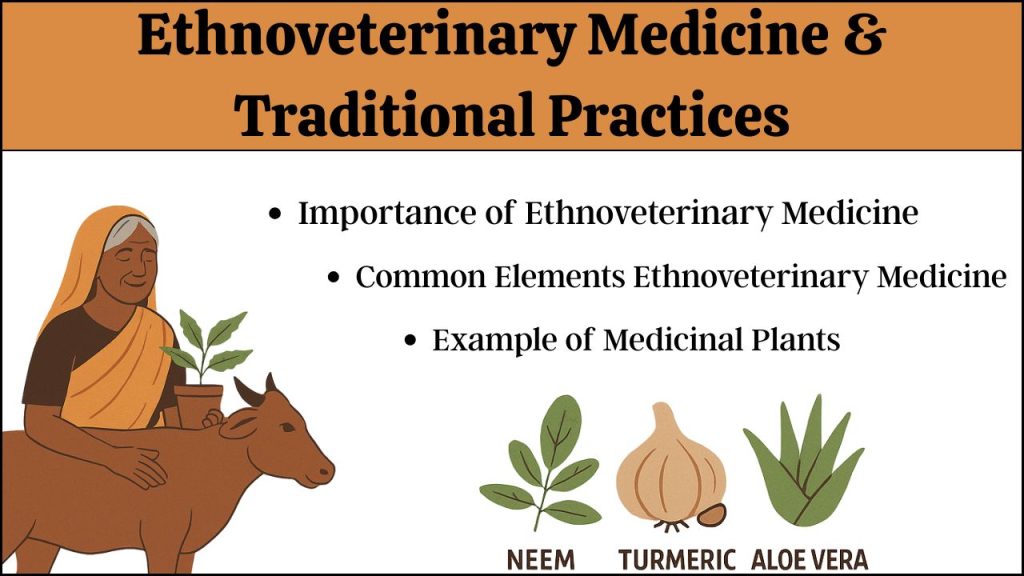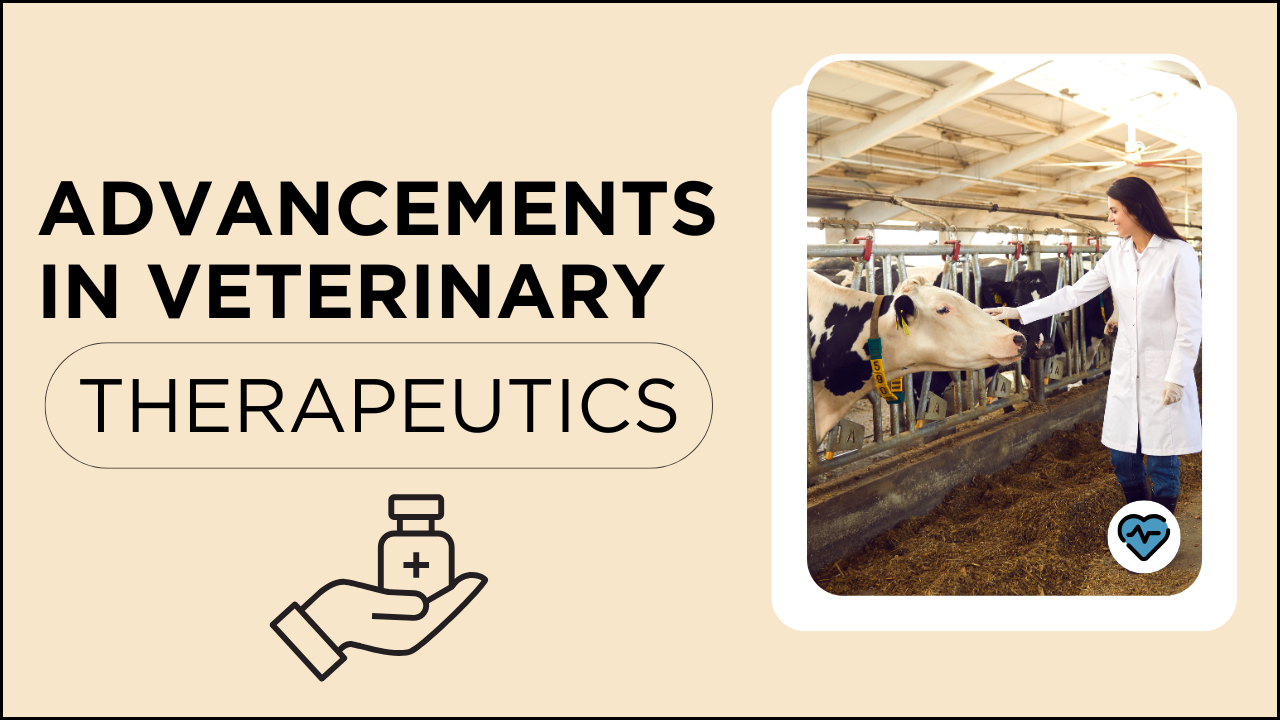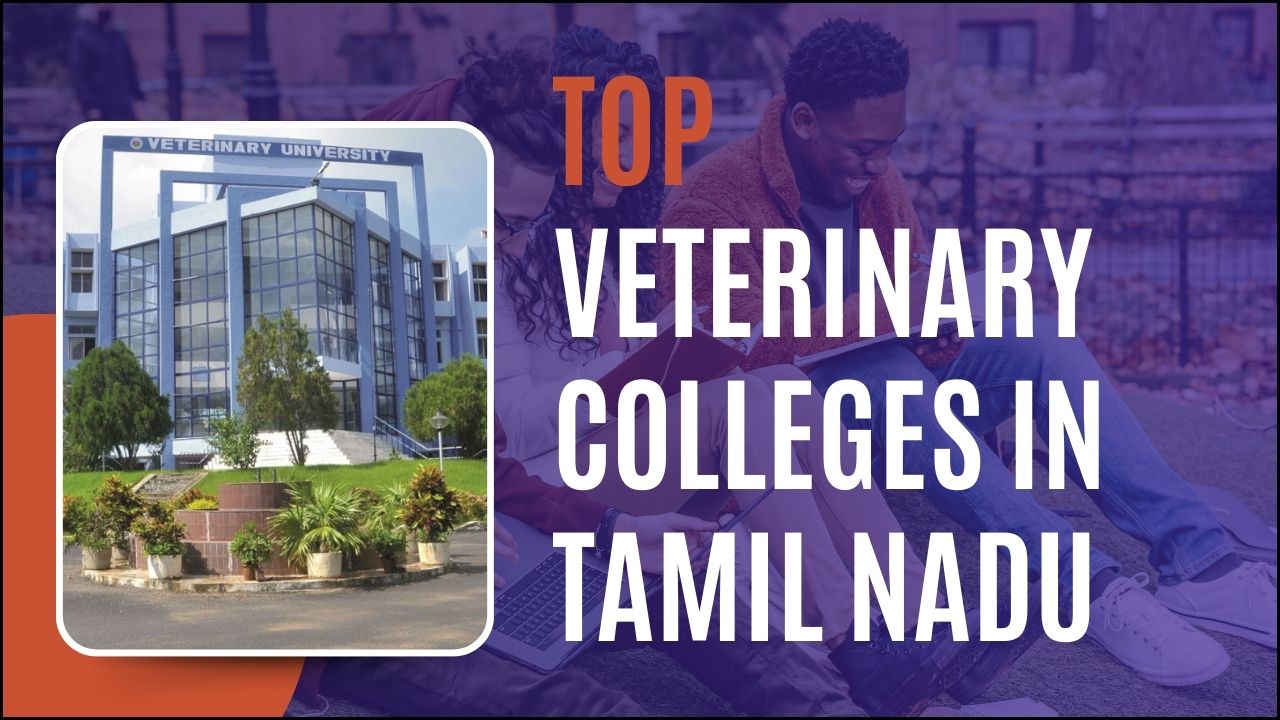
Ethnoveterinary medicine refers to the traditional knowledge, skills, and practices used by rural and tribal communities to treat and prevent animal diseases. These practices have been passed down through generations and are mostly based on the use of medicinal plants, minerals, rituals, and local knowledge.
Table of Contents
Importance of Ethnoveterinary Medicine
- Local knowledge provides cost-effective and accessible treatment for livestock.
- Traditional healers use herbal remedies, which are usually available in nearby forests or farms.
- Indigenous practices help maintain animal health in remote and rural areas.
- Cultural beliefs and experiences form the foundation of these treatments.
- Veterinary services remain limited in many regions, making traditional practices essential.
Common Elements in Ethnoveterinary Practices
- Medicinal plants form the core of most treatments.
- Natural substances like salt, lime, and cow urine are widely used.
- Rituals and spiritual beliefs play a role in healing.
- Traditional healers often learn skills through observation and experience.
- Preparation methods include crushing, boiling, soaking, or mixing plant parts.
Examples of Medicinal Plants Used in Ethnoveterinary Medicine
| Plant Name | Common Use | Parts Used | Method of Use |
|---|---|---|---|
| Neem (Azadirachta indica) | Treats skin infections in cattle | Leaves, bark, oil | Paste or decoction applied on wounds |
| Turmeric (Curcuma longa) | Heals wounds, controls inflammation | Root (rhizome) | Powder mixed with water or oil |
| Garlic (Allium sativum) | Acts as an antibiotic, dewormer | Cloves | Crushed and fed directly |
| Holy Basil (Ocimum sanctum) | Used for respiratory issues | Leaves | Gel is applied to the affected areas |
| Aloe vera | Treats burns and wounds | Leaves (gel) | Paste or decoction applied to wounds |
Regions Practicing Ethnoveterinary Medicine in India
| Region | Common Practices | Communities Involved |
|---|---|---|
| Tamil Nadu | Use of herbs and cow urine for skin issues | Tribal communities like Irula |
| Rajasthan | Use of sand baths and herbal tonics for camel care | Raika community |
| Himachal Pradesh | Use of local herbs for foot and mouth disease | Mountain tribes |
| North-East India | Use of spiritual rituals along with plant-based remedies | Mizo, Naga, and Khasi tribes |
| Maharashtra | Use of oils and leaf paste to treat cattle wounds | Dhangar and Bhil communities |
Diseases Commonly Treated with Traditional Practices
- Foot and mouth disease: Treated with turmeric and neem paste.
- Digestive issues: Treated with garlic, asafoetida, and castor oil.
- Skin infections: Treated with neem oil, aloe vera, and turmeric.
- Fever: Treated with tulsi (basil) extract and pepper water.
- Worm infestations: Controlled with garlic and areca nut preparations.
Advantages of Ethnoveterinary Medicine
- Cost remains low as most materials are locally available.
- Side effects are rare compared to chemical medicines.
- Indigenous knowledge respects nature and biodiversity.
- Local involvement strengthens the community’s confidence.
- Animal health care becomes accessible in underserved areas.
Limitations of Traditional Practices
- Standard dosage information is usually missing.
- Scientific validation is often lacking.
- Some treatments take longer to show results.
- Knowledge is at risk of being lost with modernization.
- Training of new practitioners is limited.
Role of Women in Ethnoveterinary Medicine
- Women act as knowledge keepers in many rural areas.
- Household remedies for animals are mostly prepared by women.
- Experience and observation guide their treatment practices.
- Local wisdom is shared through oral traditions and daily chores.
Conservation of Traditional Knowledge
- Documentation is important for preserving traditional knowledge.
- Research institutions and universities must collect and validate data.
- Educational programs should include ethnoveterinary concepts.
- Farmers and healers must be encouraged to share their practices.
- Collaboration with veterinary science can improve outcomes.
Efforts Made by Institutions
| Institution | Contribution |
|---|---|
| National Bureau of Plant Genetic Resources | Documentation of medicinal plants |
| Indian Council of Agricultural Research | Promotion of integrated veterinary practices |
| TANUVAS (Tamil Nadu Veterinary University) | Training programs and research in ethnoveterinary science |
| NGOs and Self-Help Groups | Community outreach and knowledge preservation |
Integration with Modern Veterinary Science
- Ethnoveterinary medicine offers a base for natural drug development.
- Herbal treatments can complement modern medicine.
- Community-based trials can test effectiveness and safety.
- Government policies can support integration with formal systems.
- Certification of traditional practitioners can improve credibility.
Case Study: Herbal Deworming in Rural Tamil Nadu
- A group of farmers used crushed garlic and neem leaf extract for deworming.
- Treatment was administered orally twice a month.
- Farmers reported improved digestion and growth in cattle.
- Veterinary professionals later studied the practice and found it effective.
Future of Ethnoveterinary Medicine
- Youth must be involved in preserving this valuable knowledge.
- Mobile applications and digital platforms can store and share practices.
- Academic research should continue validating traditional remedies.
- Sustainable farming can benefit from herbal veterinary care.
- Global interest in organic and eco-friendly practices can increase its value.
Final Analysis
Ethnoveterinary medicine reflects the deep bond between humans and animals in rural cultures. Traditional practices offer valuable insights for modern veterinary science. Respecting and preserving this knowledge not only supports animal health but also sustains cultural identity and biodiversity.
This treasure of ancient wisdom deserves scientific recognition, proper documentation, and integration with modern systems to ensure a healthier future for both animals and rural communities.





